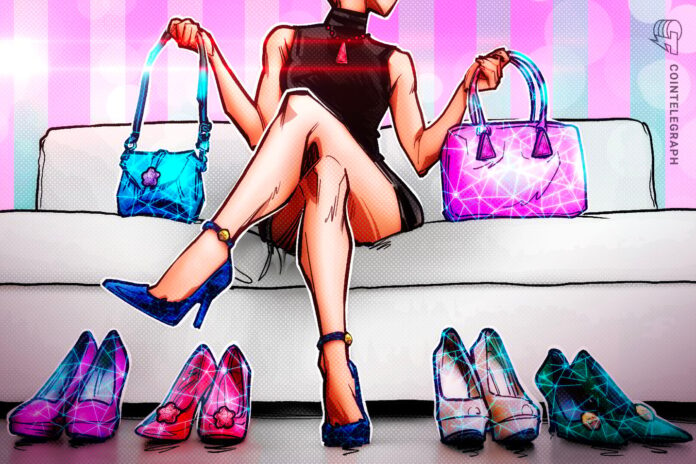Web3 is making waves in the world of fashion. This technology has the potential to revolutionize the way we shop, create and engage with fashion in a way that is more inclusive, sustainable and fun.
One of the biggest benefits of Web3 for fashion is its ability to connect the physical and digital realms. This is known as “phygital fashion.”
Brands like RTFKT (recently acquired by Nike) are leading the charge, offering a wide range of digital wearables along with augmented reality experiences and physical activations. Snapchat’s “Dress Up” feature already allows you to tap into augmented reality shopping experiences right from your couch. It may not be long until other services such as Zoom and Google Meet offer augmented reality wearable features that tap into their users’ collection of phygital goods.
Imagine walking into a clothing store and being able to scan a garment with your phone to learn more about its history and materials, and even see how it looks on different body types. Or, what if you could use augmented reality to try on clothes without ever having to undress? Web3 technology can serve as the foundation for a variety of advancements in fashion.
Web3 also has the potential to revolutionize fashion’s supply chain transparency. In a world where fast fashion is common and labor practices can be murky, Web3 can help consumers make more informed choices about the clothes they buy.
For instance, Web3 technology can be used to create a decentralized database of information about where, how, and by whom a garment was made. This information can be easily accessed by consumers, allowing them to make more ethical and sustainable fashion choices.
Join the community where you can transform the future. Cointelegraph Innovation Circle brings blockchain technology leaders together to connect, collaborate and publish. Apply today
But Web3 in fashion isn’t just about practicality — it’s also about community. Web3 technology allows fashion enthusiasts to connect and engage with each other in new and exciting ways.
For example, imagine being able to join a virtual fashion show where you can strut your stuff, chat with other attendees, and even buy and sell clothes in a decentralized marketplace. Web3 and phygital fashion make this possible, creating new opportunities for fashion lovers to connect and share their passion.
And while many onlookers laugh at the prospect of a fully digital world of fashion in the metaverse, I’d argue that it already exists. Nearly 60 million daily active users use the Roblox platform every day. Roblox touts a robust digital fashion creator economy, in which indie designers and luxury brands alike can share their latest designs.
So, if you’re a fashion lover who wants to get involved with Web3, what can you do? First and foremost, educate yourself about the technology. Read up on blockchain, smart contracts and other Web3 concepts so you can better understand how they can be used in fashion. The Ethereum foundation has a fantastic resource for getting started, and Cointelegraph also has some useful resources for those learning the ropes.
Next, get involved in the Web3 community. Join Twitter Spaces, attend IRL meetups and follow fashion-focused Web3 projects on social media. This will not only keep you up to date on the latest developments, but it will also allow you to connect with like-minded individuals and potentially even contribute to the development of Web3 in fashion.
Finally, be patient. The mass adoption of the metaverse may still be a little ways off, but the potential of Web3 in fashion is undeniable. So, grab your virtual heels and get ready to strut your stuff—phygital fashion has entered the scene and it’s looking pretty darn good.
CEO at ApparelMagic, an ERP solution for fashion companies and CEO of Palm Tree NFT, South Florida’s first NFT gallery and services company.
This article was published through Cointelegraph Innovation Circle, a vetted organization of senior executives and experts in the blockchain technology industry who are building the future through the power of connections, collaboration and thought leadership. Opinions expressed do not necessarily reflect those of Cointelegraph.
Learn more about Cointelegraph Innovation Circle and see if you qualify to join
Hits: 0








